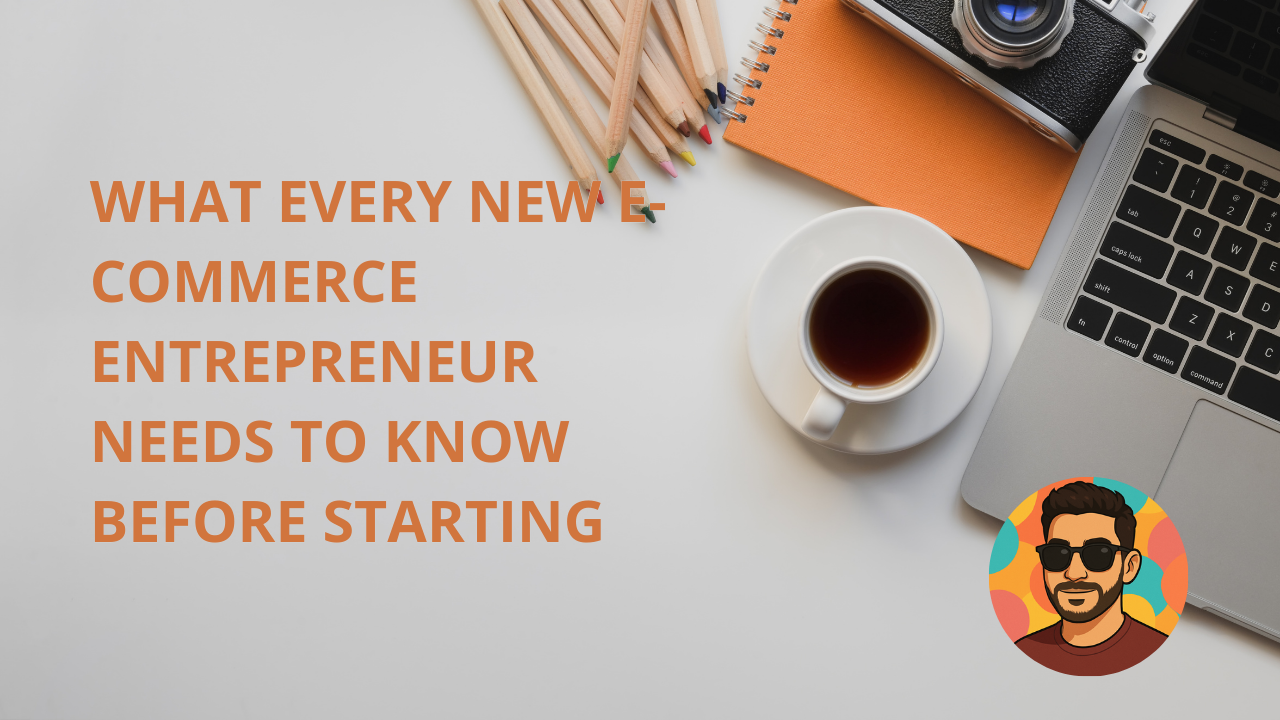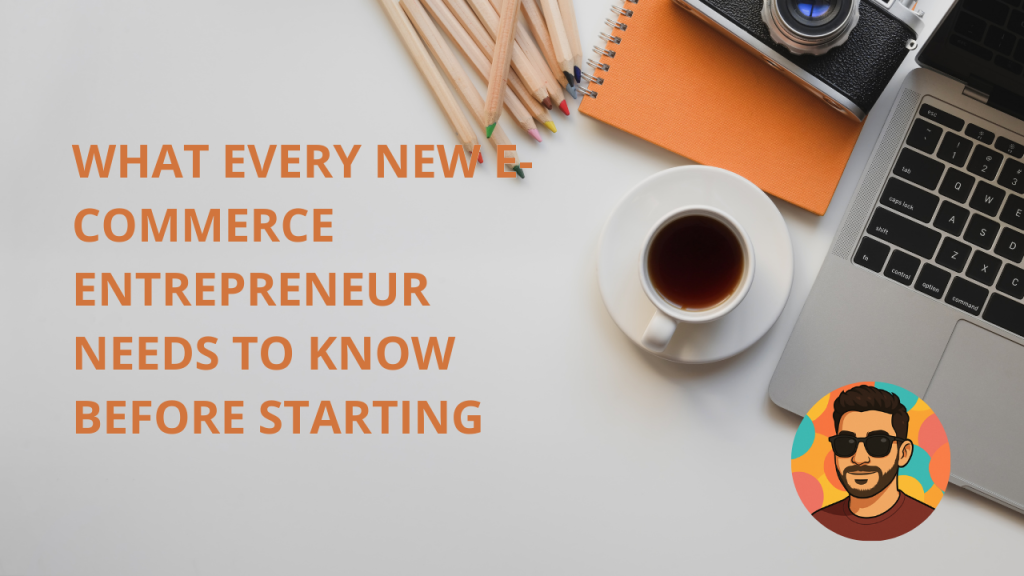I’m Javier Sune, an e-commerce entrepreneur who’s built thriving brands in the heat of competitive markets, learning through grit and missteps what it takes to succeed at Javier Sune. With global e-commerce sales projected to hit $6.3 trillion in 2025, the opportunity is massive, but so are the pitfalls for unprepared beginners. This guide lays out the must-know foundations—market research, niche selection, and mindset—to help you launch with confidence. Packed with practical tips and real-world examples, it’s your roadmap to avoiding rookie mistakes and building a sustainable online business.

The Bedrock: Market Research
Market research isn’t just a checkbox; it’s your compass. Without it, you’re guessing—and guessing in e-commerce is expensive. The goal is to understand your customers, competitors, and market trends before you invest a dime.
Start with customer research. Who are you serving? What keeps them up at night? Tools like Google Trends, Reddit, and Quora can reveal what people are searching for and discussing. For instance, a budding entrepreneur I mentored noticed a surge in searches for eco-friendly pet products. By diving into forums, she discovered pet owners were frustrated with low-quality, non-sustainable options. This insight shaped her brand’s focus and messaging, leading to a loyal customer base within months.
Next, analyze competitors. Study their websites, product offerings, pricing, and reviews. Tools like SimilarWeb or SEMrush can show their traffic sources and marketing strategies. A friend who launched a fitness apparel brand spent weeks dissecting competitors’ social media ads. He noticed they overlooked plus-size customers, a gap he filled with inclusive sizing and targeted Instagram campaigns. His store hit six figures in its first year.
Finally, track market trends. Platforms like Statista or industry reports from McKinsey can highlight growth areas. For example, the rise of “buy now, pay later” services has reshaped consumer behavior. Ignoring such trends can leave you playing catch-up. My own experience taught me this: early in my journey, I underestimated the shift to mobile commerce. Optimizing my store for mobile doubled conversions overnight.
Actionable takeaway: Dedicate at least two weeks to research. Create a customer persona, map out five competitors, and list three trends shaping your industry. This groundwork minimizes costly pivots later.
Want to choose the right platform for your research-driven store? Read Choosing the Right Platform: Shopify, WooCommerce, or Something Else?.
Niche Selection: Finding Your Sweet Spot
Choosing a niche is like picking a lane in a marathon—you need one you can dominate. A common mistake is going too broad (e.g., “I’ll sell clothes”) or too narrow (e.g., “hand-knitted cat sweaters for Siamese breeds”). The sweet spot is a niche with demand, low-to-moderate competition, and room for your unique spin.
Start with demand. Use tools like Amazon Best Sellers or eBay’s trending items to spot what’s selling. For example, during the pandemic, home fitness equipment skyrocketed. A savvy entrepreneur I know launched a store selling compact workout gear for small apartments, capitalizing on this demand spike. Her niche wasn’t just “fitness” but “space-saving fitness solutions,” which resonated deeply.
Assess competition. Red ocean markets—think phone accessories or generic t-shirts—are brutal for newcomers. Instead, aim for blue oceans or less saturated sub-niches. When I started, I entered a crowded beauty niche but focused on vegan, cruelty-free skincare for sensitive skin. This differentiation helped me carve out a loyal audience despite fierce competition.
Add your unique value. What can you offer that others don’t? It could be superior quality, storytelling, or a cause. TOMS shoes, for instance, built a brand around giving back, not just footwear. In my case, I emphasized transparency, sharing ingredient sourcing stories that built trust with customers. This turned one-time buyers into repeat advocates.
Test your niche. Before going all-in, validate your idea. Run a small ad campaign on Meta or TikTok to gauge interest. A colleague tested a niche for ergonomic office chairs by dropshipping a few models. When ads converted well, he invested in inventory and branding, scaling to $50,000 monthly revenue.
Actionable takeaway: Brainstorm 10 niche ideas. Narrow to three based on demand, competition, and your ability to add value. Test one with a $100 ad budget to confirm interest before committing.
Need help finding products for your niche? Check out Product Sourcing 101: Where and How to Find Winning Products.
Mindset: The Invisible Engine
E-commerce isn’t just about tactics; it’s a mental game. The right mindset keeps you resilient through setbacks and focused on long-term growth. Without it, even the best research and niche won’t save you.
Embrace failure as feedback. Every flop is a lesson. When my first store tanked due to poor supplier choices, I was gutted. But analyzing what went wrong—unreliable shipping, subpar products—taught me to vet partners rigorously. That failure paved the way for my next venture, which grew a 20,000+ customer base. Similarly, a mentee’s ad campaign flopped, costing $500 with zero sales. Instead of quitting, he tweaked his targeting and copy, turning his next campaign into a $10,000 revenue driver.
Think long-term. E-commerce isn’t a get-rich-quick scheme. Building a brand takes time. Warby Parker didn’t disrupt eyewear overnight; they spent years refining their model. In my journey, I focused on cultivating repeat customers over quick sales. Offering loyalty discounts and personalized follow-ups boosted retention by 30%. Patience pays off.
Stay adaptable. Markets shift, and rigidity kills. When TikTok emerged, many dismissed it as a fad. I experimented early, creating short videos showcasing product benefits. Those clips drove 15% of my traffic within months. A competitor who stuck to traditional SEO? They’re still struggling to catch up.
Invest in learning. The best entrepreneurs are perpetual students. Podcasts like “The Ecommerce Fuel Podcast,” books like The Lean Startup by Eric Ries, and courses on platforms like Udemy keep you sharp. I allocate 10 hours monthly to learning—whether it’s mastering GA4 analytics or studying consumer psychology. This habit has saved me thousands by avoiding outdated strategies.
Actionable takeaway: Commit to a growth mindset. Journal one lesson from every setback, set a 12-month goal for your brand, and schedule weekly learning time. Adaptability and persistence are your superpowers.
For tools to support your learning, see Essential Tools and Resources for E-commerce Beginners.
Blending It All Together
Market research, niche selection, and mindset aren’t isolated steps—they’re interconnected. Research informs your niche, and mindset fuels your ability to execute. A real-world example ties this together: An entrepreneur I advised wanted to sell sustainable home goods. Her research revealed a demand for eco-friendly kitchenware but heavy competition. She niched down to bamboo-based products for minimalist households, validated demand with $200 in ads, and launched with a scrappy mindset. When her first supplier failed, she pivoted to a new one without panicking. Today, her brand generates $30,000 monthly, proving the power of combining these principles.
Common Pitfalls to Avoid
Before wrapping up, let’s flag some traps new entrepreneurs fall into:
- Skipping research: Launching without data is like driving blindfolded. You’ll crash.
- Chasing trends blindly: Fidget spinners were hot once—then gone. Build for enduring demand.
- Perfectionism: Waiting for the “perfect” website delays progress. Launch, then iterate.
- Neglecting customer service: One bad experience can tank your reputation. Prioritize responsiveness.
- Burnout: E-commerce is a marathon. Schedule downtime to stay sharp.
Learn how to tackle these pitfalls in Overcoming Common E-commerce Challenges: Solutions That Work.
Your Next Steps
Starting an e-commerce business is exhilarating but daunting. Here’s a 30-day plan to kickstart your journey:
- Week 1: Research your market. Build a customer persona and analyze competitors.
- Week 2: Brainstorm and shortlist niches. Test one with a small ad campaign.
- Week 3: Set up a basic store (Shopify or WooCommerce) and source initial products.
- Week 4: Launch a soft opening, promote via social media, and collect feedback.
Throughout, nurture your mindset. Read one e-commerce book, listen to a podcast, and reflect on your “why.” This keeps you grounded when challenges arise.
Final Thoughts
E-commerce is a dynamic, rewarding arena, but success demands preparation. By mastering market research, choosing a viable niche, and cultivating a resilient mindset, you’re not just starting a business—you’re building a brand with staying power. My own path at Javier Sune, like many others, was paved with trial and error. Yet, every lesson reinforced this truth: the entrepreneurs who succeed aren’t the luckiest—they’re the ones who plan, adapt, and persist. Take these principles, apply them diligently, and you’ll be well on your way to carving out your own space in the e-commerce world.
